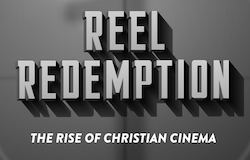A Story That Can’t Be Screwed Up, by Tyler Smith
14 Nov
 A CHRISTMAS CAROL (2009)
A CHRISTMAS CAROL (2009)
Written and Directed by: Robert Zemeckis
Starring: Jim Carrey, Gary Oldman, Colin Firth, Bob Hoskins
I remember first seeing the marketing campaign for Robert Zemeckis’ A Christmas Carol and rolling my eyes. The trailers and billboards featured a mugging Jim Carrey as Ebenezer Scrooge being put through the computer generated ringer; he gets flung through the air, shrunk down to the size of a mouse, and other supposedly hilarious things. This couldn’t seem less like the Charles Dickens classic; instead, it seemed like Zemeckis was taking things that we all knew about the story and was exploiting them. As such, I had no interest in seeing the film. “A Christmas Carol” has long been one of my favorite stories and I was in no mood to see it ruined by an overly-ambitious director with a limitless budget.
Due to unforeseen circumstances, I wound up seeing it and thought it was surprisingly okay. Perhaps I shouldn’t have been surprised, though. There is such inherent power in Dickens’ story that all the special effects in Hollywood could never completely outshine it. If you’re going to make a movie of “A Christmas Carol,” all you have to do is remain fairly faithful to the source material and make a serviceable film and, almost by default, you’ve got a very watchable movie. Such is the nature with Dickens; he created such intriguing tales and characters, it’s nearly impossible to totally screw them up.
As expected, the action sequences stick out like a sore thumb, as if accidentally edited in from a different- worse- film. Their inclusion smacks of pandering, as they seem to come right in the middle of extended periods of genuine emotion and reflection. It seems as if Zemeckis was afraid of losing the audience with all this British dialogue and had to do something to keep their attention.
This is most problematic during Scrooge’s encounter with the Ghost of Christmas Future. In what is undeniably the darkest and most foreboding section of the story- as it should be, giving Scrooge’s emotional journey- our protagonist finds himself shrunk down to the size of a mouse and chased through the sewer pipes of London and comically smashed in the face by ice sickles. This makes so little sense dramatically, I wonder how a director as savvy as Robert Zemeckis was able to justify keeping it in. Perhaps he thought that some comic relief was needed. If so, it mystifies me as to why he felt the need to make the Ghost of Christmas Future so frightening in the first place. Don’t get me wrong; the dread is perfectly realized, and I count it as one of the film’s strength, but if the director felt the need to break the tension with some humor, perhaps he could have simply tried to make the section less frightening, rather than try to shoehorn in some broad physical comedy.
As frustrating as moments like these are, there’s no denying that Zemeckis is a master at utilizing cutting edge technology to create a fully realized world, as he did in Beowulf, Who Framed Roger Rabbit?, and The Polar Express. While some of the character designs are still a bit too creepy for my taste- the impish Bob Cratchit being a prime example- the slightly off-kilter landscapes and grotesquely exaggerated characters seem to fit with the tone that Dickens so often strove to create.
The animation also allows Zemeckis the freedom to pursue his unique interpretation of well-known scenes. For example, as Marley’s Ghost clatters out of Scrooge’s house, we find him joining a veritable army of miserable ghosts haunting the streets of London, pleading for the forgiveness of the living. There are so many of these melancholy apparitions that we find ourselves coming to a harrowing conclusion: the greed and indifference of Scrooge and Marley is not an uncommon thing. Marley is merely one of the thousands- millions- of people that could have done something valuable with their money and time, but chose instead to hoard it and look down on those without it. Perhaps we know a few people like this. Perhaps we are people like this.
As entertaining as Dickens is, his commitment to stimulating social and economic awareness has always fascinated me. “A Christmas Carol” is one of his more straightforward treatises on the subject of the responsibility of those that have to those that don’t. It is dark and lingers on the precipice of condemnation, only to allow Scrooge- and, by extension, the audience- a chance at redemption. And, if we don’t take it, God help us, everyone.
As frustrating as some of Zemeckis’ artistic choices may be for me, I admire him for standing by the central idea of “A Christmas Carol.” He clearly understands the power and appeal of the story and, with a few notable exceptions, allows Dickens to speak for himself. And, as always, he has a lot to say.



No comments yet